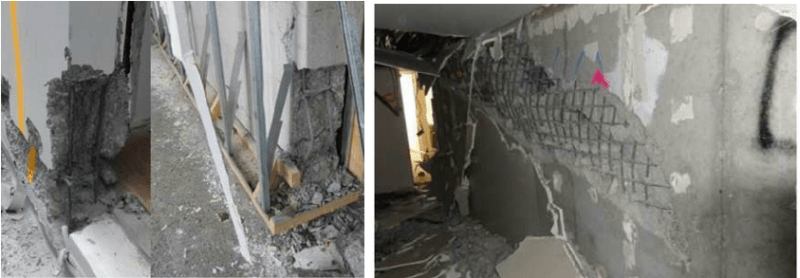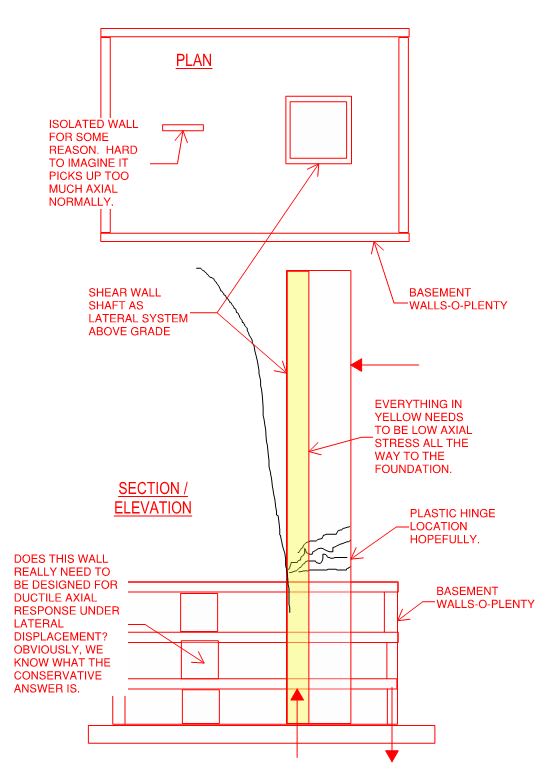I do agree the axial limits are in part due to ultimately being about curvature and poor behaviour under seismic loading of walls with larger axial loads, what I was perhaps failing at explaining is the axial load limit isn't purely about seismic only. It applies everywhere in NZ code for walls and especially so under gravity only loading.
In the NZ standard at least the axial load limit applies to all load cases for walls, ULS gravity even (1.2G+1.5Q, 1.35G, etc). It is not limited to seismic cases only; it applies to all load cases. I cannot say if the AS standard has the same intent, but there seems to be a lot of stuff that is similar in the NZ intent in the 2018 version. I believe it also directs you to design to NZS3101 for proper ductile design. Rapt can probably expand on the thinking of the code committee if he reads this, and what the exact intent is.
So basically my understanding is the limit is not only about some roundabout way of addressing poor wall performance under seismic. It is also about axial loads being wholesale limited to the 0.3f'cAg limit irrespective of the load case. In a seismic sense in coupled wall systems which undergo little curvature, they can for example generate large coupled axial forces.
We had several walls fail in the 2011 earthquakes in Christchurch due to poor confinement combined with larger than expected axial loads being developed compared with the original design. This is the basis for the changes in our standard and the introduction of the similar provisions in your standard.
For example, the right image below occurred in the Chancellor Hotel I believe, I believe it was attributed to axial loads due to overstrength axial loads and poor confinement, larger than anticipated axial loads developed due to an albeit unusual structural system involving a transfer structure. They reckon if the shaking had gone on for slightly longer the entire structure would have collapsed with a significant loss of life. But this is what the provisions are meant to protect against. Using walls to carry large axial gravity loads is what these provisions address, both gravity alone and seismic induced gravity loads irrespective of wall location: -

In NZ at least in your basement you would still need to comply without the displacement issues irrespective. Your provisions come out of our same learnings as I understand it that our provisions were based on. The 2018 version of AS3600 took a large leap forward in bringing your design standard forward to what is considered more or less current best practice based on the current state of research into wall behaviour. Some of the stuff that was newly introduced to AS standard relating to seismic design has been in the standards here in some form or another since the early 1970's, so you can certainly leverage a lot of the similar approaches and so forth from NZ for seismic design in Australia as there is a lot of commonality.
A common theme that seems to come through here on Engtips from Australian designers is one of how do we avoid these new provisions because they are so onerous, change the way we designed in the past, etc, etc. We get that here to, but we know the real consequences and loss of life that can occur when designers take shortcuts like this and argue semantics around code provisions and the like just to avoid doing the obvious.







![[thumbsup2] [thumbsup2] [thumbsup2]](/data/assets/smilies/thumbsup2.gif)
![[pc] [pc] [pc]](/data/assets/smilies/pc.gif)